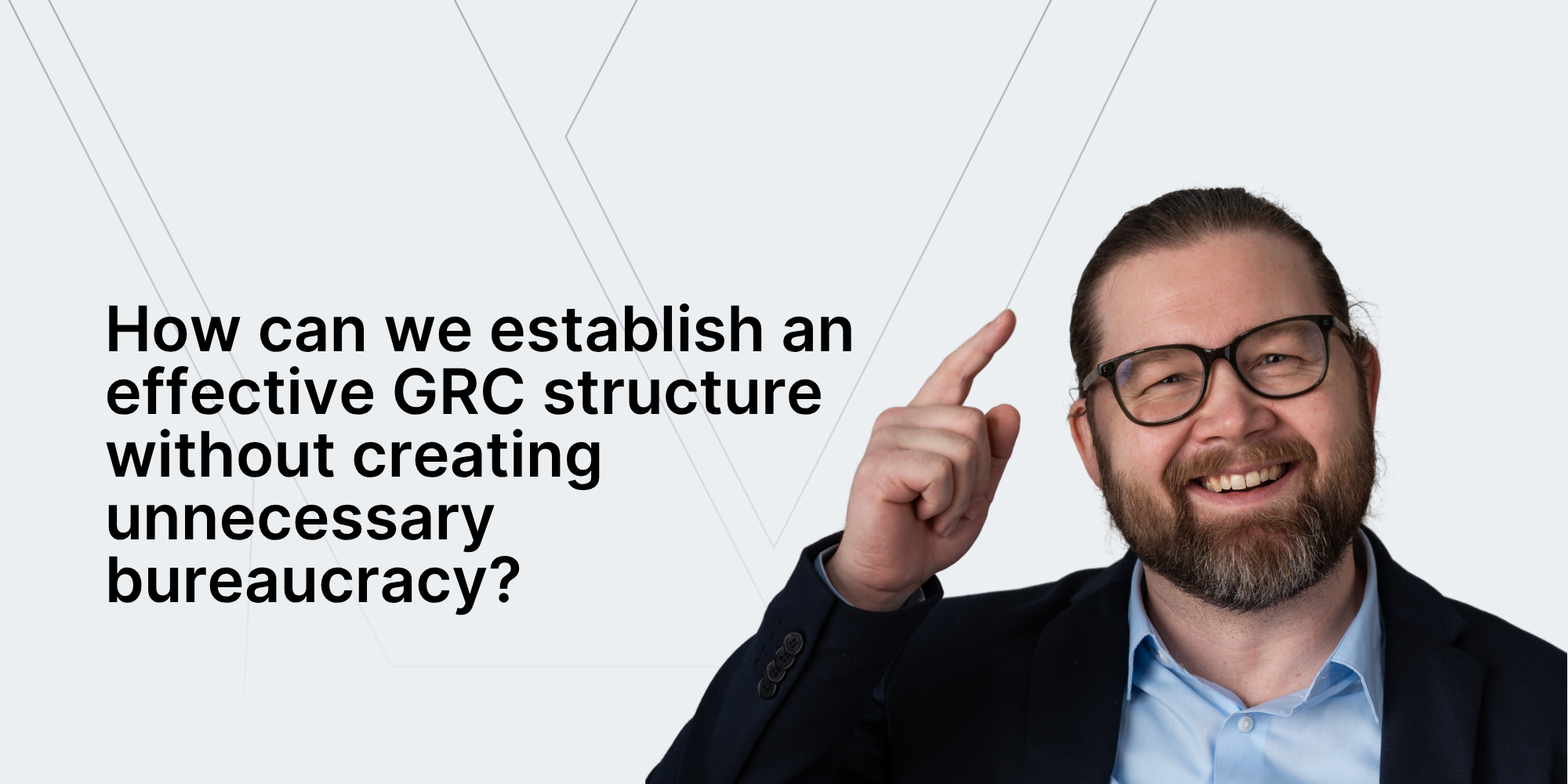GRC without the red tape: how to escape the paperwork nightmare

One of our readers from Sustainable Compliance recently asked us: “How can we build an effective GRC structure without piling on unnecessary bureaucracy?”
Here’s our take on the answer.
But first – GRC, data protection and information security are largely about documenting risks and compliance efforts while also managing them effectively.
We sometimes talk about GRC becoming a paper tiger – where documentation ends up overshadowing the real work of improving security and data protection.
Documentation matters – but so do actual security efforts.
Here are four areas where you can take action to stop the bureaucracy from taking over.
Tip 1: Define KPIs and roles – especially in collaboration with management
Many of us spend countless hours trying to align with management on data protection and information security.
First, we try to decode how we can contribute to the overall business or organisational strategy. Read more about this in our article: 3 Steps to Making GRC Strategic.
Then we work hard to keep leadership informed and engaged – so they understand the risk landscape and can allocate the right resources. Learn more about reporting to management here.
Getting clarity on exactly what your leadership expects from you and your organisation will save you from many hours of second-guessing.
Tip 2: Use a system – say goodbye to Excel and emails
Full disclosure: Wired Relations is a GRC solution for managing information security and data protection.
We built it because we ourselves were drowning in Excel sheets, emails and calendar notifications.
If you want to avoid the same, you need two things:
- A complete overview of your compliance activities and their status – covering systems, vendors, processes, risks and controls, and
- A structure that ensures you can manage both large and small tasks in an organised way.
In our experience, this simply isn’t possible without a dedicated system. (Yes, we’re biased – but for good reason!)
Explore our eBook on Simplifying Compliance.
Tip 3: Automate documentation – there’s a huge saving waiting
Documentation is a major part of compliance and risk management – and it’s absolutely essential.
Why?
- It’s required by regulators
- It’s the foundation for keeping leadership up to date
- And if your efforts aren’t documented, they can’t be passed on when roles change
It’s always easiest to document risk assessments, supplier audits and controls as you go. Most GRC platforms handle this automatically – and that can save you an incredible amount of time.
Tip 4: Use a good task manager – a lot of bureaucracy lives in your head
There are a lot of moving parts in a team responsible for data protection and information security. Just a few examples:
- Risk assessments need regular reviews
- Vendors must be monitored
- Controls must be performed and recorded
If you’re managing all of that in your head, two things will happen: You’ll forget half of it – and you’ll burn out.
A solid Task Manager helps you stay on top of what needs doing – without the stress.
📰 Stay ahead in GRC
Get stories like this straight to your inbox. From GDPR to cybersecurity – we’ll keep you informed on what’s shaping the digital future.


.webp)




.jpg)